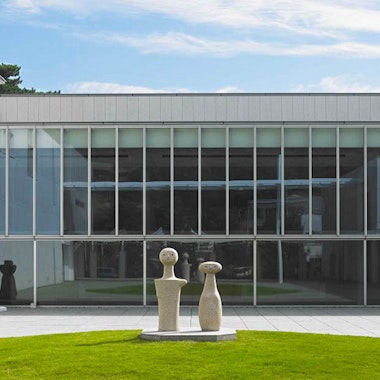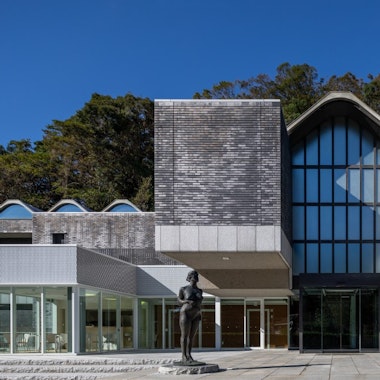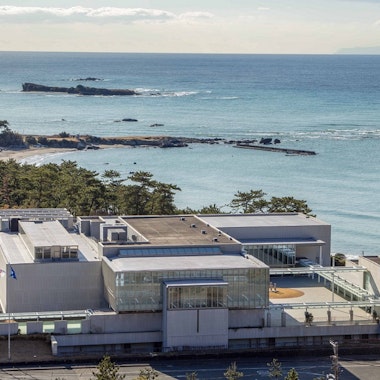


The Kanagawa Prefectural Museum of Modern Art was established in 1951 as Japan's first public museum dedicated exclusively to modern art. Originally located in Kamakura's Tsurugaoka Hachimangu shrine grounds, the museum was designed by renowned architect Sakakura Junzo, a disciple of Le Corbusier. The original Kamakura building became an iconic example of modernist architecture in Japan, though it closed in 2016. The museum now operates from its Hayama location, which opened in 1984 overlooking Sagami Bay.
The museum holds significant importance in Japan's modern art landscape, housing a collection of over 14,000 works spanning Japanese and international modern art from the early 20th century onward. Its permanent collection features prominent Japanese artists including Yokoyama Taikan, Kishida Ryusei, and Umehara Ryuzaburo, alongside Western masters such as Picasso, Kandinsky, and Matisse. The museum has played a crucial role in introducing contemporary art movements to Japan and fostering appreciation for modern artistic expression.
Visitors to the Hayama facility experience art displays within a building designed by architect Yamamoto Riken, positioned to integrate ocean views with exhibition spaces. The museum features rotating exhibitions from its permanent collection alongside special themed exhibitions throughout the year. The architectural design itself incorporates natural light and coastal scenery, creating a contemplative environment for viewing art. A museum shop offers art books and exhibition catalogues, while the surrounding coastal location provides opportunities for scenic walks.
The museum is accessible from Zushi Station on the JR Yokosuka Line, followed by a 20-minute bus ride on the Keikyu Bus bound for Hayama via Isshiki. Alternatively, visitors can take a bus from Shin-Zushi Station on the Keikyu Line. General admission typically costs ¥250 for the permanent collection, with special exhibition fees varying. The coastal Hayama location is approximately one hour from Tokyo and can be combined with visits to nearby beaches and the historic Kamakura area.